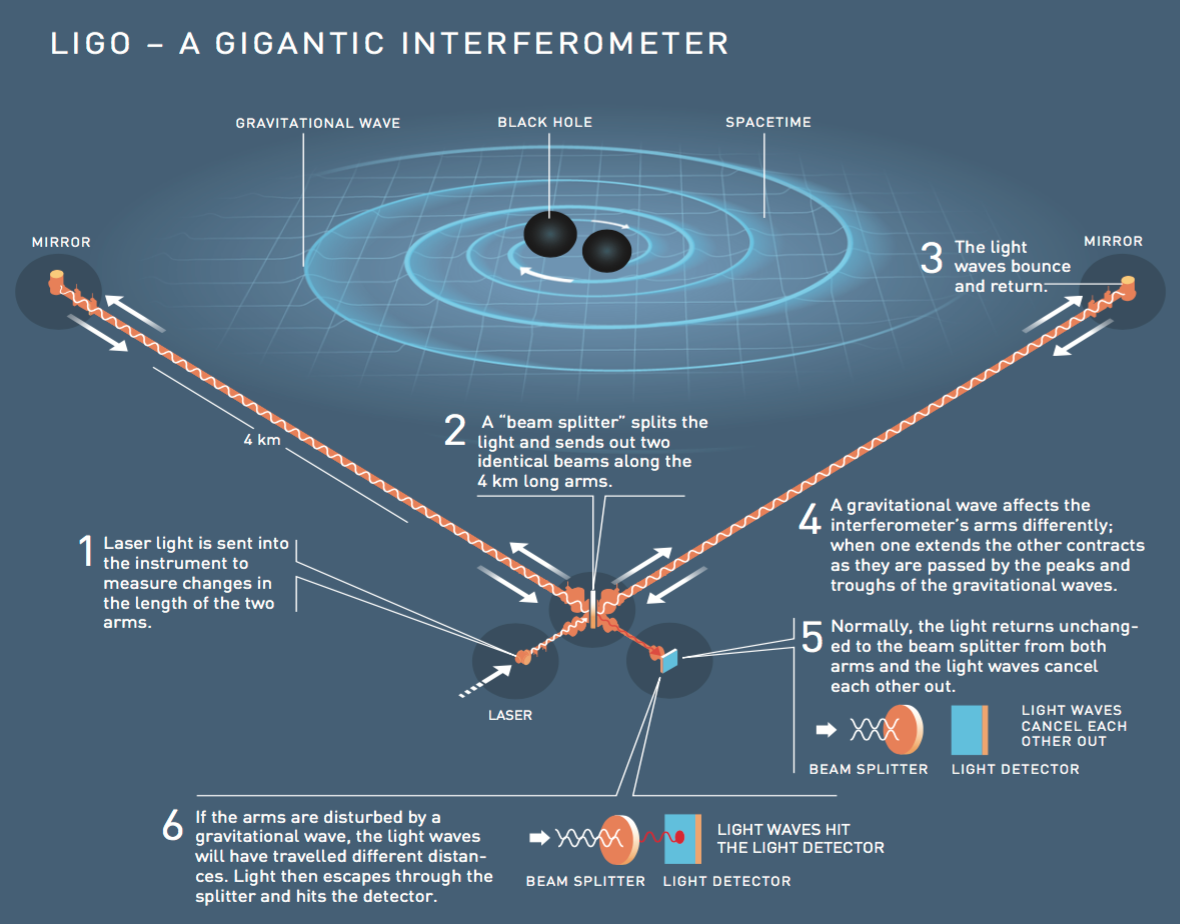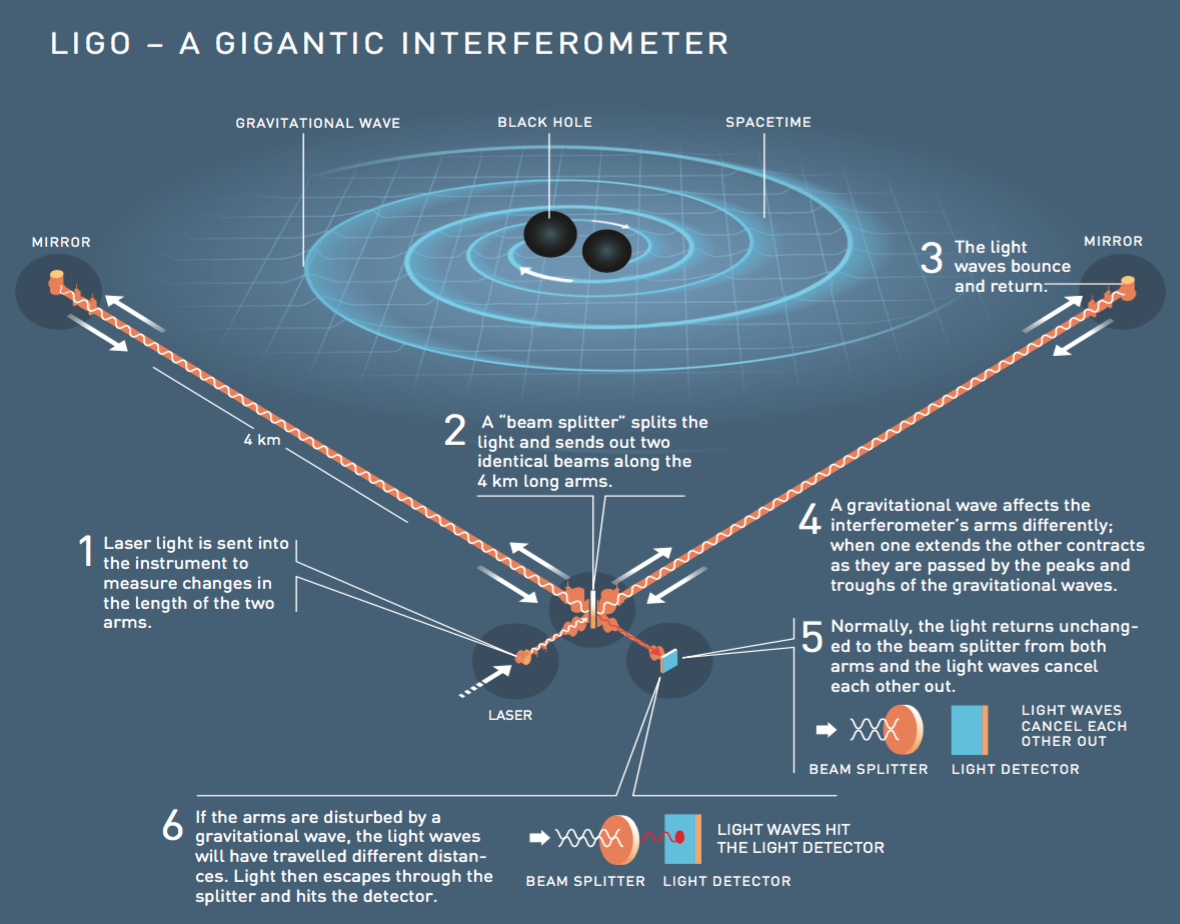News & Events

2017 Nobel Prize in Physics for the Observation of Gravitational Waves
Albert Einstein's theory of relativity, formalized in the early part of the 20th century, contained a number of important and well-defined observational consequences that allowed for this radical theory to be tested against the conventional Newtonian understanding of gravity. Among these tests were: modifications to orbital dynamics (e.g. the perihelion precession of Mercury's orbit), the detection of light around massive objects (in particular the Sun), the gravitational redshift of light, time dilation due to the presence of a massive body, and the existence of gravitational radiation (also known as gravitational waves). Observations of the aforementioned have since confirmed that Einstein's theory of relativity, and not Newtonian gravity, is consistent with the Universe we live in today; however, until recently, one of Einstein's fundamental predictions had not yet been truly tested.
Gravitational waves, produced by the acceleration of massive bodies, are predicted to propagate away from the source at the speed of light, producing in their wake distortions in the fabric of space itself. While gravitational waves are expected to continuously pass through Earth, even the most cataclysmic of astrophysical events (e.g. the merging of black holes) are only expected to produce spatial distortions on subatomic scales; thus it is perhaps not surprising that it took many years before physicists became convinced that the sheer existence of gravitational waves was a testable hypothesis. Rainer Weiss and Kip Thorne were two of the first physicists who began to believe in the 1970s that not only was a detection possible, but that the understanding of gravitational radiation would usher in a new era of physics and revolutionize our understanding of the cosmos.

Figure 1: Visual of the LIGO interfermometer. Taken from [1].
Weiss and Thorne paved the way for the future detection of gravitational waves by designing what is known as a laser interferometer. An interferometer has two beam lines positioned so as to make the shape of an `L', with a mirror located at the junction that allows for light to be both split and re-combined (see Fig. 1, taken from [1], for an accompanying visual of the laser interferometer). If a laser is directed towards the aforementioned mirror, it will split into two distinct beams such that half of the incident beam will traverse the length of each arm of the interferometer; the light may be then reflected at the end of each arm, such that both beams return to the mirror located at the original junction, and then recombine. In the absence of external effects, this interferometer is designed so as to produce a cancellation between the light being combined from the two beams - that is to say, no signal should be observed. However, as gravitational waves pass through the interferometer, one arm increases in length while the other decreases; this inherently produces an imperfect cancellation between the beams traversing each arm of the interferometer, leading to a distinctive signal of gravitational waves.
The development of such high-level technology has been an enormous effort, and could only have been possible with the incredible advancements in a variety of fields ranging from quantum measurements to space sciences, and from cryogenics to theoretical physics [2]. In 1994 Barry Barish took over as the head of LIGO (Laser Interferometer Gravitational-wave Observatory), and in subsequent years, converted it from a small organization to a major international collaboration. The fi rst LIGO detectors went online in 2002 and detected nothing but noise over the next ~ 8 years. On September 15th of 2015, the LIGO detectors were brought back online and immediately witnessed an astonishing and magni cent event: the merging of two black holes, each of which with a mass roughly 30 times that of the Sun. Since then, LIGO has observed 3 additional merging black holes events, and has promised more announcements in the near future.
The detection of gravitational waves represents one of the last major confirmations of Einstein's theory of relativity, and presents the possibility of exploring the Universe in a way that has never before been possible: we now have a telescope capable of studying gravitation in the most extreme conditions and illuminating the physics of astonishingly dense degenerate states of matter. It is for these reasons that Weiss, Thorne, and Barish have been awarded the 2017 Nobel Prize in physics.
For more information on the history, science and future of gravitational waves, see [3].
References
[1] Cosmic Chirps. https://www.nobelprize.org/nobel_prizes/
physics/laureates/2017/popular-physicsprize2017.pdf, 2017.
[2] Ligo laboratory website.https://www.ligo.caltech.
[3] The 2017 Nobel Prize in Physics. https:
//www.nobelprize.org/nobel_prizes/physics/laureates/2017/, 2017.


